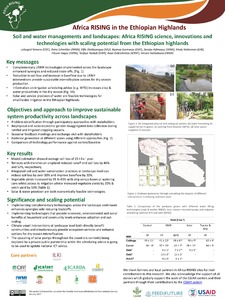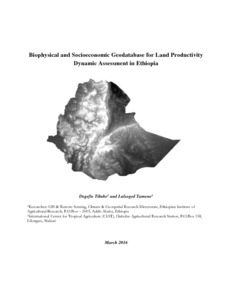Location
Unique among African countries, the ancient Ethiopian mon
EIAR is a governmental research institute that conducts vast research activities in different research areas with the vision to see an improved livelihood of all Ethiopians engaged in agriculture, agro-pastoralism and pastoralism through market competitive agricultural technologies.
The Ethiopian Agricultural Research is one of the oldest and largest agricultural research system in Africa. Ethiopian Agricultural Research System (EARS) has evolved through several stages since its first initiation during the late 1940s, following the establishment of agricultural and technical schools at Ambo and Jimma. In 1955, a full-fledged agricultural experiment station was established at Debre Zeit (now named Debre Zeit Agricultural Research Center) under the then Imperial College of Agricultural and mechanical Arts (now called Haramaya University) and had been continued as the major research entity until the mid-1960s. In 1966, Institute of Agricultural Research (IAR) was established as the first nationally coordinated agricultural research system in Ethiopia. Institute of Agricultural Research (IAR) was established with a mission to formulate national agricultural research guidelines, coordinate National Agricultural Research System, and undertake research in its centers and sub-centers located in various agroecological zones of Ethiopia.
In Ethiopia, agricultural research underwent significant reform in the early 1990s following the declaration of a decentralized political system of Government of the Federal Democratic Republic of Ethiopia. The National Agricultural Research System has prearranged as including the Federal Research Institute, the Regional Agricultural Research Institutes (RARIs) and research undertakings of Higher Learning Institutions (HLIs). In 1993, numbers of IAR research centers were transferred to the regional governments and become independent research centers. During this time, Ethiopian Agricultural Research Organization (EARO) has established with new set up in 1997 by Proclamation number 79/1997 and later it is renamed as the Ethiopian Institute of Agricultural Research (EIAR) on 25th October 2005.
As per this Proclamation, its objectives are (1) to generate, develop and adapt agricultural technologies that focus on the needs of the overall agricultural development and its beneficiaries; (2) to coordinate technically the research activities of Ethiopian Agricultural Research System; (3) build up a research capacity and establish a system that will make agricultural research efficient, effective and based on development needs; and (4) popularize agricultural research results.
Mission
EIAR’s mission is to conduct research that will provide market competitive agricultural technologies that will contribute to increased agricultural productivity and nutrition quality, sustainable food security, economic development, and conservation of the integrity of natural resources and the environment.
Vision
EIAR aspires to see improved livelihood of all Ethiopians engaged in agriculture, agro-pastoralism, and pastoralism through market competitive agricultural technologies.
Members:
Resources
Displaying 1 - 5 of 8Assessing livestock water productivity in mixed farming systems of Gumara watershed, Ethiopia
Mapping soil erosion hotspots and assessing the potential impacts of land management practices in the highlands of Ethiopia
An enormous effort is underway in Ethiopia to address soil erosion and restore overall land productivity. Modelling and participatory approaches can be used to delineate erosion hotspots, plan site- and context-specific interventions and assess their impacts. In this study, we employed a modelling interface developed based on the Revised Universal Soil Loss Equation adjusted by the sediment delivery ratio to map the spatial distribution of net soil loss and identify priority areas of intervention.






